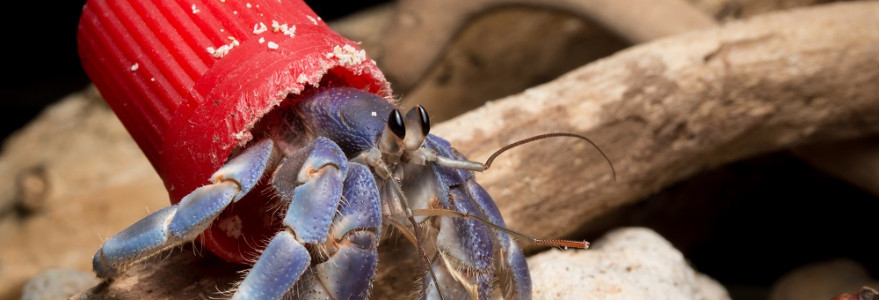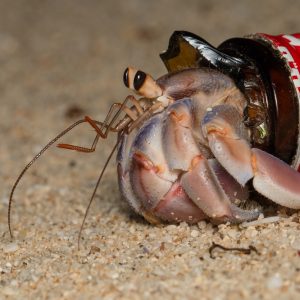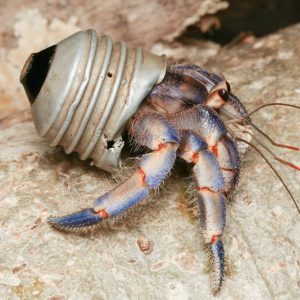Hermit crabs need to protect their soft abdomen in shells. They have recently begun to use plastic and other anthropogenic materials in this role, as scientists from the University of Warsaw and Poznań University of Life Sciences report in Science of the Total Environment.
The most common anthropogenic wastes found in seawater are plastics. They have a very harmful effect on wildlife and the environment. It also turns out that they can significantly alter the natural behaviour of animals.
On 6th January, Science of the Total Environment published an article by Prof. Marta Szulkin and Dr Zuzanna Jagiełło from the Institute of Evolutionary Biology at the Faculty of Biology, the University of Warsaw, and Dr Łukasz Dylewski from Poznań University of Life Sciences. The researchers describe how, using novel research methods associated with iEcology (internet ecology meaning the use of various online data sources as a tool in ecological research), the emergence of a new behaviour in hermit crabs was demonstrated. The animals started to use plastic lying in the water as their armour.
Key to survival
“Hermit crabs need to protect their soft abdomen. They usually do this by hiding in shells left behind by dead crustaceans. One such hiding place is not enough for a lifetime because of the crab’s development, but also because of intra-species competition,” Prof. Marta Szulkin says.
The scientists analysed photos of hermit crabs from the Coenobitidae family published on social media and other online platforms.
“In the photographs, we discovered a total of 386 individuals using ‘artificial shells’ – mainly plastic caps, but also made from broken necks of glass bottles or metal ends of light bulbs. According to our calculations, ten out of sixteen species of land hermit crabs in the world use this type of shelter. This unusual behaviour is observed in all tropical regions of the Earth,” Prof. Marta Szulkin explains.
In the article, the scientists present the presumed evolutionary directions of individual species of hermit crabs in the Anthropocene. Among the factors influencing the choice of “artificial shells” by these animals, the researchers highlight: sexual selection, the weight of plastics, odour stimuli, and the possibility of camouflage in polluted environments.
In the course of further research, the scientists will determine reasons for this behaviour and its impact on the evolution of hermit crabs.
“These analyses will deepen our understanding of the consequences of plastic pollution in marine ecosystems, as well as the evolution of species in the context of new evolutionary pressures associated with the Anthropocene,” the researcher adds.






